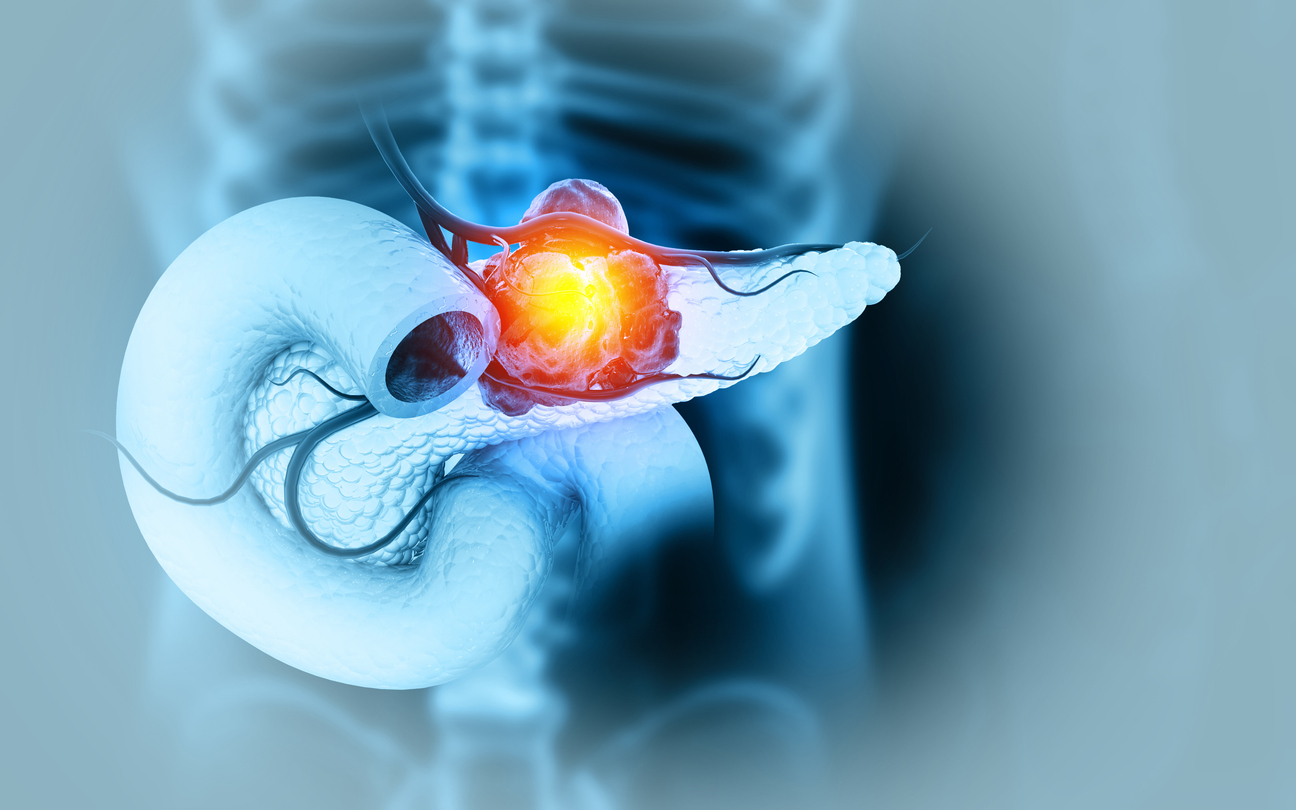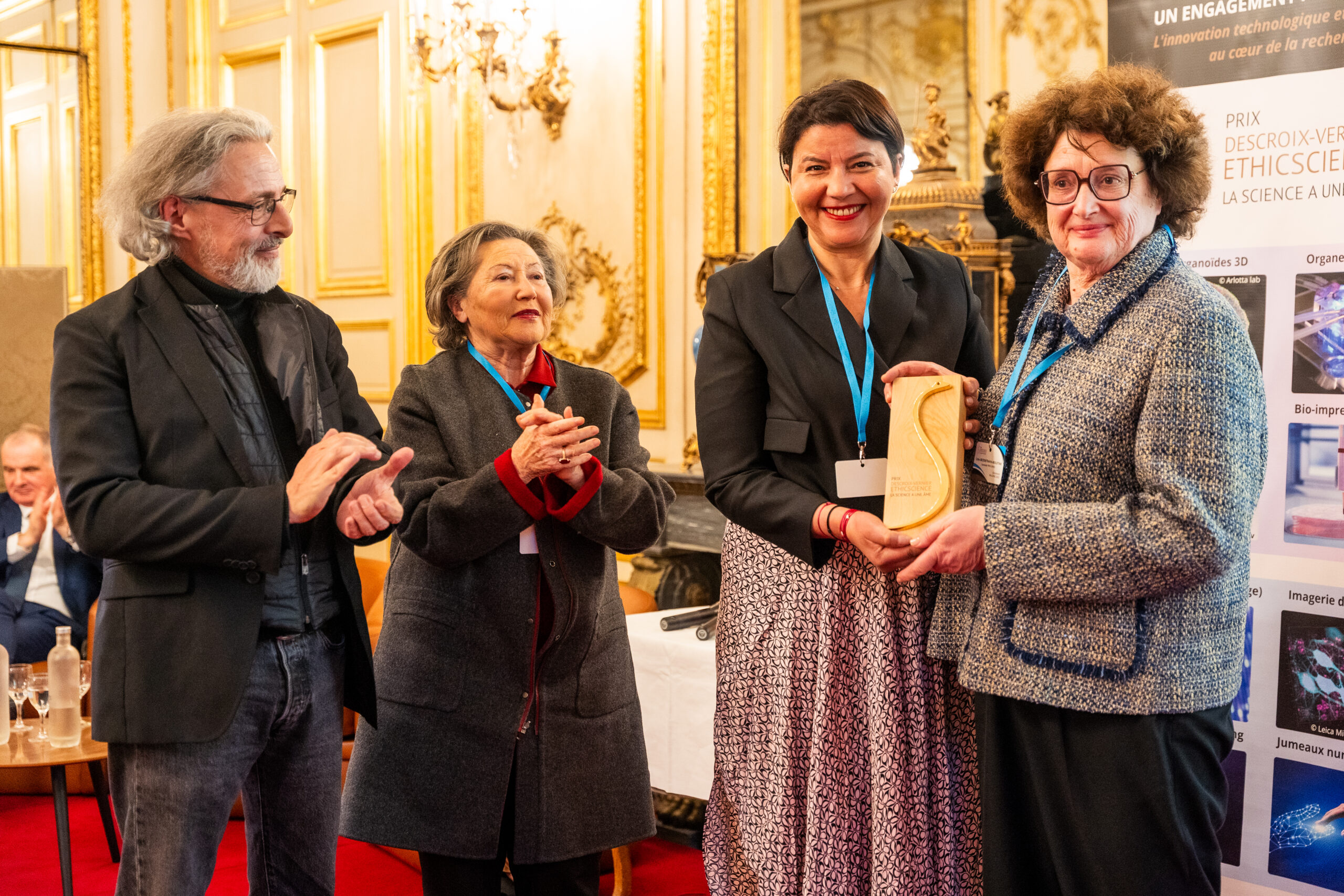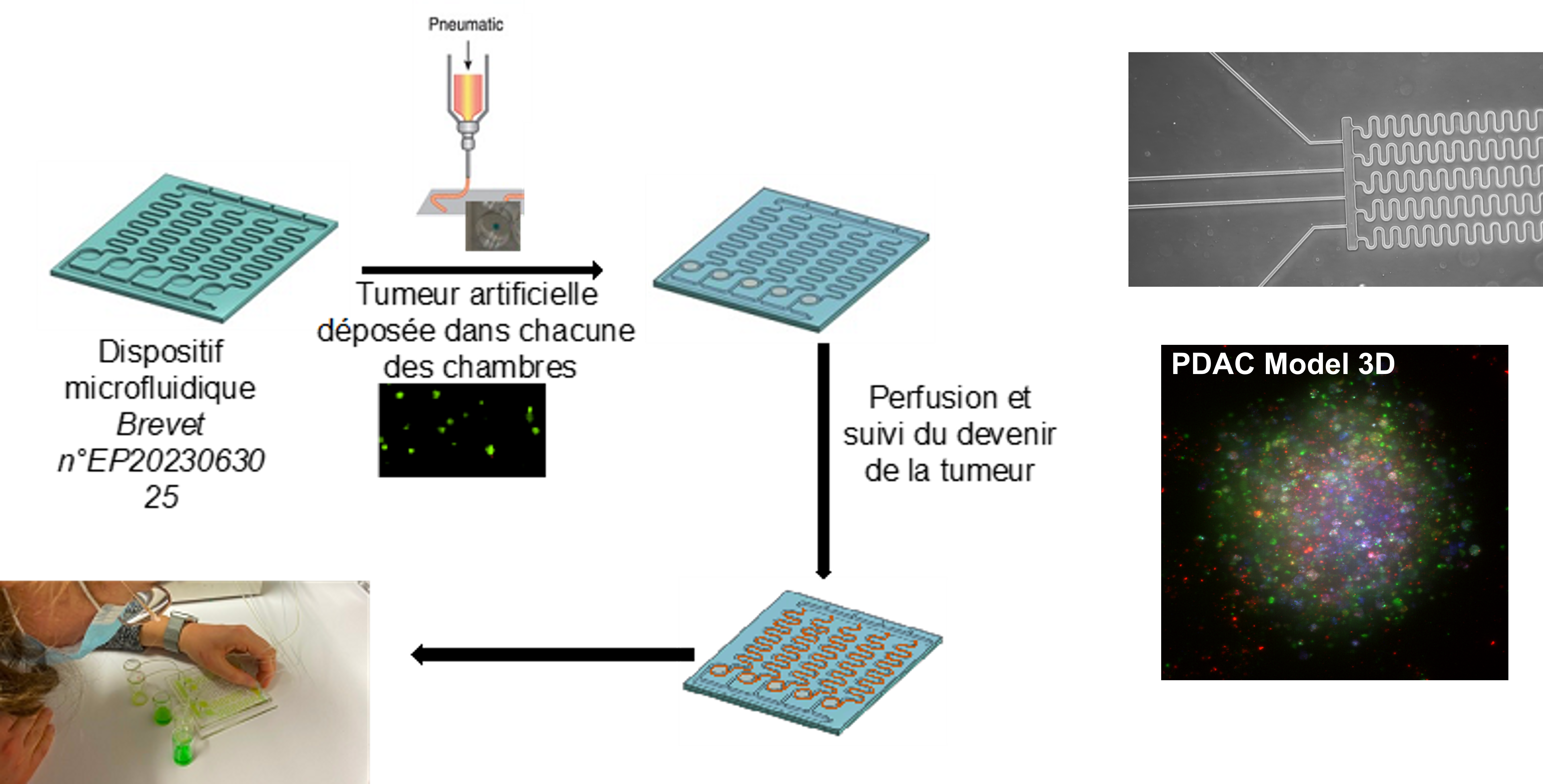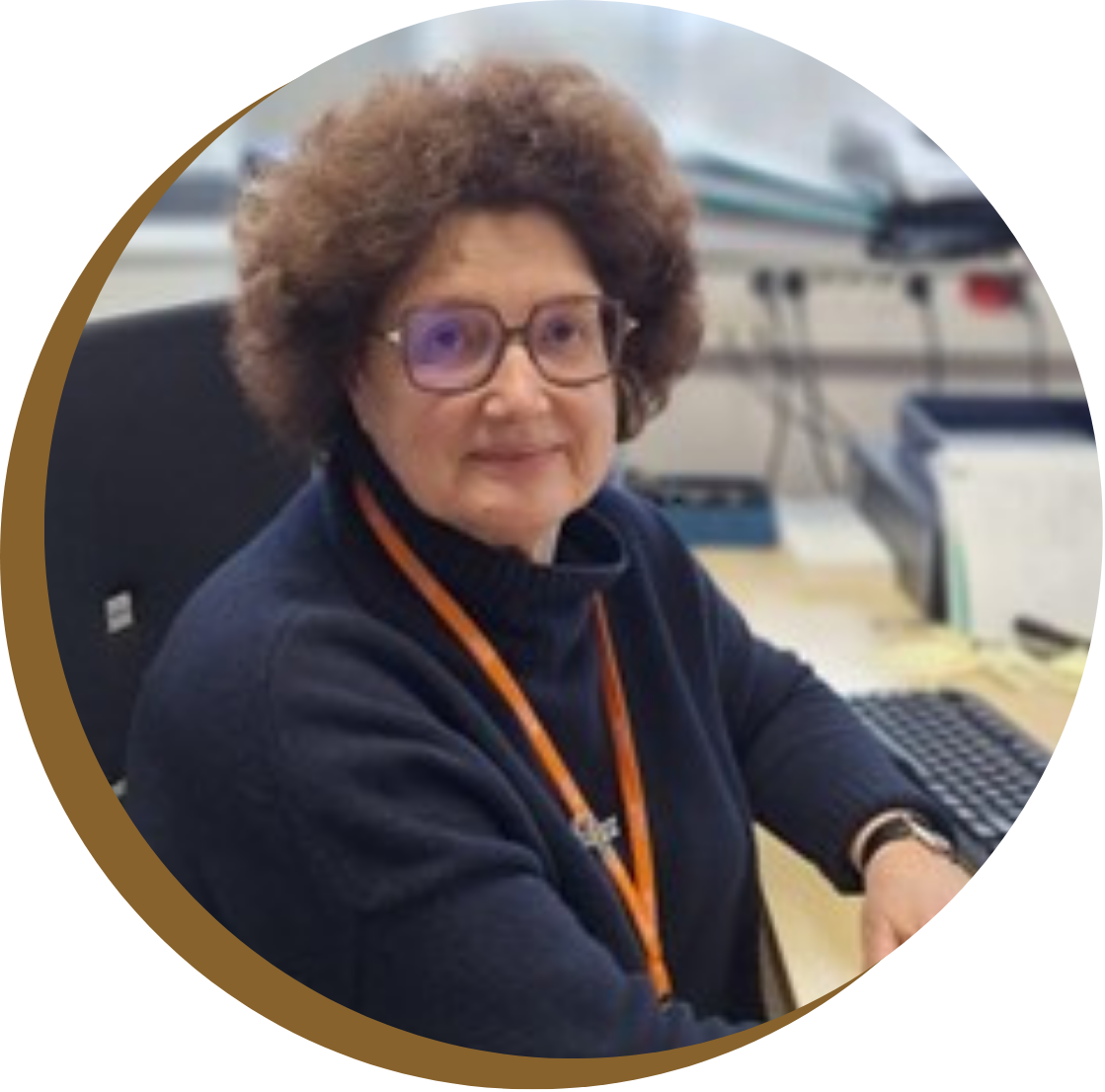“PDAC on a chip”: understanding drug efficacy constraints by modelling pancreatic adenocarcinoma (PDAC)


Prof Halima Alem-Marchand, Université de Lorraine-CNRS & Dr Lina Bezdetnaya, Institut de Cancérologie de Lorraine

Seeking to enhance the integration of existing data and tools that can be applied to regulatory assessment in toxicology and/or human health.


Prof Halima Alem-Marchand, Université de Lorraine-CNRS & Dr Lina Bezdetnaya, Institut de Cancérologie de Lorraine

Image credits : Comité scientifique Pro Anima / Axel Coquemon

The aim of this project is to develop a dynamic model combining 3D printing and microfluidics to reproduce the tumour environment of pancreatic cancer (PDAC). This innovative approach, based on a patented system, makes it possible to study the interaction of drugs with tumour cells and their environment under realistic conditions, with a view to taking into account the protein-nanoparticle interactions that influence their efficacy.
Led by Professor Halima Alem-Marchand and Dr Lina Bezdetnaya, this project combines expertise in nanomedicine and oncology to create an advanced ‘cancer-on-a-chip’ platform, offering predictive and ethical tools to improve cancer treatments.

Image credits : Prof. Halima Alem-Marchand & Dr. Lina Bezdetnaya

Image credits : Prof. Halima Alem-Marchand & Dr. Lina Bezdetnaya
Month 1‑Month 8 : Elaboration of the 3D system with tri-culture and its complete characterisation : choice of optimal concentration, ratio between three cell types and viability. Techniques used : fluorescence microscopy, histology, immunohistochemistry, viability tests and RT-qPCR.
Result : 3D system composed of Panc‑1, CAFs (cancer-associated fibroblasts) and THP‑1 (macrophages) characterised and viable.
Months 9‑Month 12 : Perfusion of the 3D system in the patented microfluidic system. Study of the impact of perfusion on the previously characterised structure (M1-M3).
Result : 3D system composed of viable Panc‑1, CAFs and THP‑1 under flow .
Month 12-Month 24 : Contact of Gemcitabine with the 3D model system obtained by bioprinting and study under different flows reminiscent of blood circulation.
Results : Determination of viability as a function of flow ; Highlighting of the majority population of macrophages (anti-tumour M1 and/or pro-tumour M2) within the structure.

Halima Alem-Marchand has a doctorate in Materials Science from the Catholic University of Louvain in Belgium, and her research focuses on interdisciplinary approaches aimed at integrating bioprinting and organs-on-a-chip for cancer modelling, in particular with the Institut de Cancérologie de Lorraine. Her work has led to the emergence of the cancer-on-a-chip theme, recognised in particular by her inclusion in the IUF (Junior Member 2019 – 2024).

Lina Bezdetnaya-Bolotine holds a doctorate in biophysics from Moscow State Medical University in Russia. In 1993, she joined the Henri Poincaré University in Nancy and was subsequently appointed professor. Since 2005, she has been part of the Centre de Recherche en Automatique (CRAN), CNRS, Nancy-Université, where she develops 3D models to reproduce the tumour microenvironment with the aim of proposing a personalised anti-cancer therapy approach.